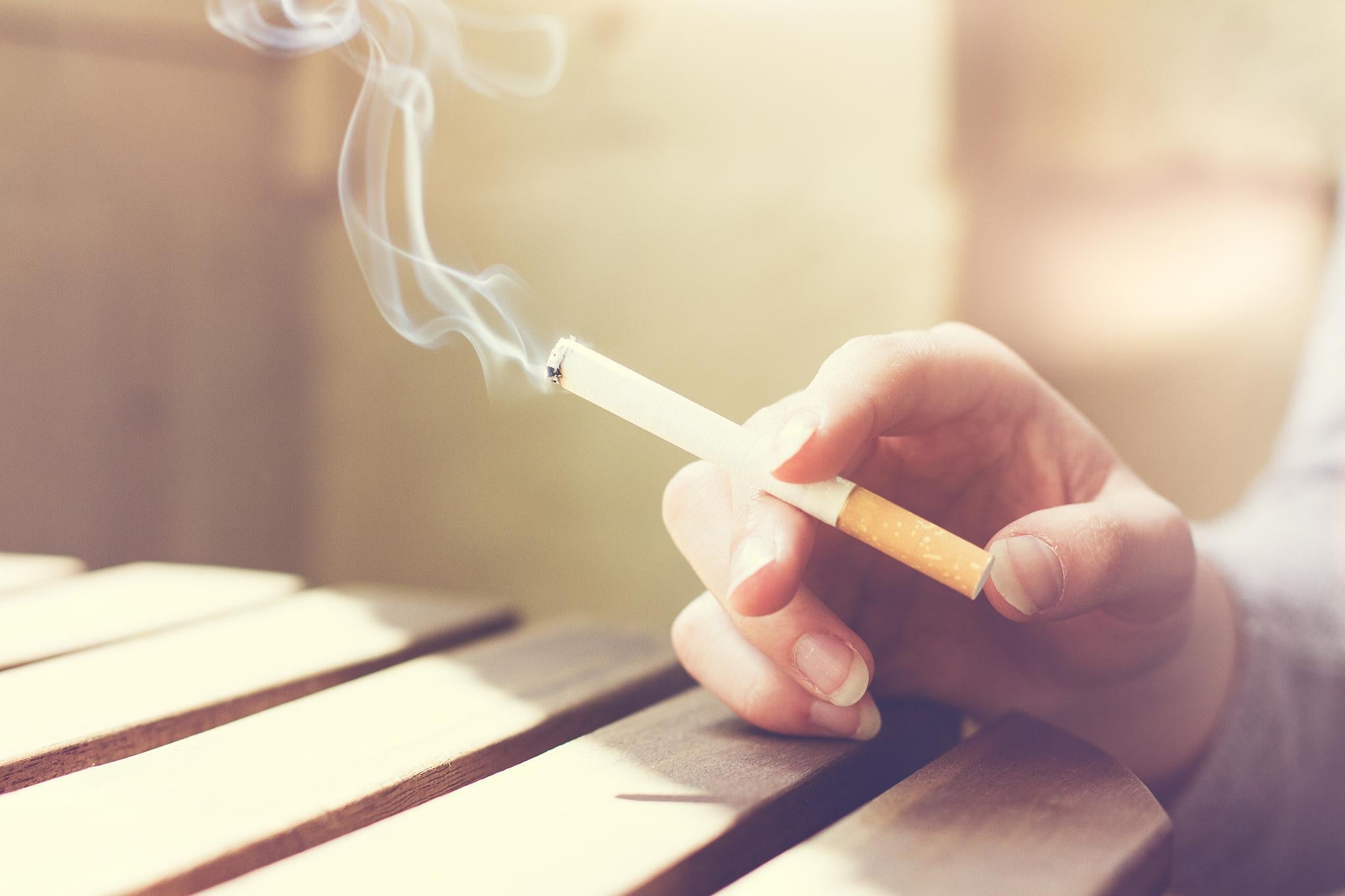Smokers more vulnerable to most common lung cancer from ‘light’ cigarettes, scientists say
Research found ‘clear relationship’ between rising rates of adenocarcinoma and greater demand for ‘light’ cigarettes

Your support helps us to tell the story
From reproductive rights to climate change to Big Tech, The Independent is on the ground when the story is developing. Whether it's investigating the financials of Elon Musk's pro-Trump PAC or producing our latest documentary, 'The A Word', which shines a light on the American women fighting for reproductive rights, we know how important it is to parse out the facts from the messaging.
At such a critical moment in US history, we need reporters on the ground. Your donation allows us to keep sending journalists to speak to both sides of the story.
The Independent is trusted by Americans across the entire political spectrum. And unlike many other quality news outlets, we choose not to lock Americans out of our reporting and analysis with paywalls. We believe quality journalism should be available to everyone, paid for by those who can afford it.
Your support makes all the difference.So-called “light” cigarettes with ventilated filters may have made smokers more vulnerable to what is now the most common form of lung cancer, say scientists.
Researchers investigated why rates of adenocarcinoma, a cancer that occurs deep in the lungs, increased over the last 50 years.
During the same period, the number of people developing other forms of lung cancer fell in relation to more smokers quitting tobacco.
The results confirmed what many experts had long suspected. A “clear relationship” was seen between rising rates of adenocarcinoma and greater demand for “light” cigarettes.
Cigarettes with tiny holes in their filters were introduced 50 years ago and vigorously marketed as a healthier “low tar” option.
Dr Peter Shields, from Ohio State University in the US, who led the new research, said: “This was done to fool smokers and the public health community into thinking that they actually were safer.
“Our data suggests a clear relationship between the addition of ventilation holes to cigarettes and increasing rates of lung adenocarcinoma seen over the past 20 years.
“What is especially concerning is that these holes are still added to virtually all cigarettes that are smoked today.”
It is now illegal to label cigarette packets with the words “light” or “low tar” both in the US and the UK.
But the study authors say regulators such as the US Food and Drugs Administration (FDA) should now take action to ban the use of cigarette filter ventilation holes.
The scientists conducted an in-depth analysis of research literature including clinical trials, epidemiological studies, and toxilogical investigations, which included internal tobacco company documents.
Filter ventilation holes allow smokers to inhale more smoke containing higher levels of cancer causing chemicals and other toxins, they believe.
“The filter ventilation holes change how the tobacco is burned, producing more carcinogens, which then also allows the smoke to reach the deeper parts of the lung where adenocarcinomas more frequently occur,” said Dr Shields.
The findings are reported in the Journal of the National Cancer Institute.
More research is needed to confirm that banning ventilation holes would not increase the addictiveness of cigarettes or exposure to toxic chemicals, said the scientists.
Copyright Press Association
Join our commenting forum
Join thought-provoking conversations, follow other Independent readers and see their replies
Comments